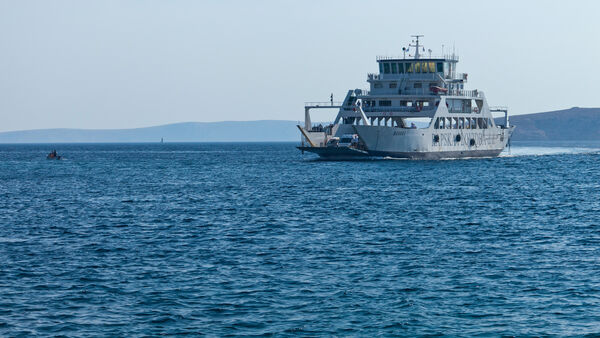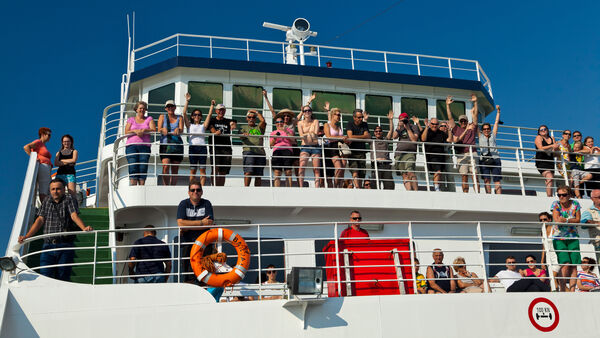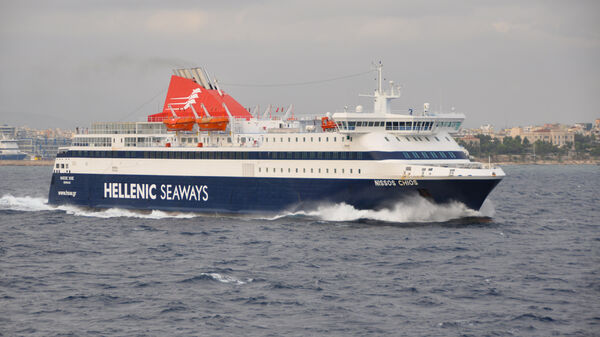European Ferries



By Rick Steves
Boats can be a romantic mode of European travel. They're particularly useful for Greek or Croatian island-hopping in Greece or Croatia, day-tripping from Spain to Morocco, gawking at Norwegeian fjords, and connecting Scandinavian destinations overnight — saving both time and the expense of a pricey hotel room. (But for any ferry ride of more than a couple of hours, it's smart to compare the cost of the ferry trip with the cost of a budget-airline flight.)
Ferries rarely bunny-hop along the coastline of any one country (though Norway's Hurtigruten ferries still do). Instead, ferries primarily serve islands or connect two countries. For instance, rather than the Eurostar train, you can take a Portsmouth-Normandy ferry between England and France.
Hulking, slow-moving ferries usually carry both cars and passengers, run in almost any weather, and tend to be cheaper than smaller, faster catamarans. They have virtually unlimited deck space for walk-on passengers, though their space for cars is limited. On many islands, big car ferries arrive at a different point (usually farther from the main town) than smaller catamarans (which may drop you right in the town center).
Sleek, speedy passenger-only catamarans generally cost more, but save time. However, they do have to slow down (or sometimes can't run at all) in high winds or other inclement weather. Catamarans have limited seating that can sell out. They're also the less-romantic option, as most require you to stay inside the boat while en route (for safety’s sake —they're that fast).
Schedules
Some countries have a national ferry company (such as Croatia's Jadrolinija), but in most places, routes are operated by a variety of smaller companies. You can usually find schedules online (check the ferry operator's website); however, particularly in Mediterranean countries, they may not be posted more than a few days before the season starts, making it challenging to plan your midsummer trip in the springtime. It's a good idea to confirm the boat's sailing time at least one day ahead. Service to smaller Mediterranean islands is particularly prone to seasonal changes: Routes that run once daily in summer may drop to four days per week in shoulder season and two days per week in winter. Small, tourist-oriented boats along Italy's Cinque Terre and Amalfi Coast run roughly from Easter through October.
Beyond the ferry operator's website, you can also check schedules at AFerry.com for most of Europe; CalMac for ferries to the Scottish isles; Danae, Greek Ferries, and Greek Travel Pages for Greek island services; Visit Norway for Norwegian fjord boats; and Jadrolinija and TP-Line for Croatian boat service.
Getting Tickets
You can buy most ferry tickets online, and some offer advance-purchase discounts (such as those to or from the UK). In person, either visit a local ferry ticket office or ask about tickets at the tourist information office. In some cases, you can simply show up at the ferry terminal's ticket window an hour before departure (most tickets cost the same whether you buy them in advance or at the last minute). During peak times in popular destinations (July–August along Croatia's Dalmatian Coast and between Greece's more famous islands), get advice from your hotelier, the tourist information office, or a good guidebook about how far ahead you should book your ticket.
If you'll be setting sail very soon after your arrival in Europe, do your research from home, and book a ticket in advance. Otherwise, the ferry could sell out. This is particularly important if you're driving a car onto a ferry — in which case you may need to line up hours in advance. (If it's possible to book a space in advance, do so.)
Some international ferry routes are covered or discounted with a rail pass (such as Ancona or Bari, Italy, to Patra, Greece; and Sweden to Germany or Denmark). Swiss lake boats are integrated into that country's comprehensive public transportation system (and rail pass).
Overnight Ferries
If you're taking an overnight ferry, consider your sleeping options. A basic passenger ticket is "deck class," meaning you'll simply have to camp out wherever you can find room. You can pay a little more for an assigned seat. A "berth" (bed) costs more, similar to a night train. The more private your lodgings, the more you'll pay, especially if a toilet and shower are included in the compartment. You usually can (and should) reserve overnight accommodations in advance. Some Greek island ferries, however, only allow you to reserve beds upon boarding.
On Board
While many ferry companies tell foot passengers to be at the dock 30 minutes before the boat leaves, there's usually no need to show up that far ahead, especially for short-haul daytime boats. One advantage to turning up early is the chance to grab a better seat, which does make a difference if your ferry has open seating.
On the ferry, you may be able to stow your luggage on a public rack on the boarding level; otherwise you'll haul it up several flights of stairs to the passenger decks. You can buy food and drinks on board most boats (or bring your own snacks or a picnic instead). Dining is a featured attraction on a few ferries, such as the smörgåsbord service on Scandinavian overnight cruises. Ferries of all sizes typically have bathrooms on board. Some ferries offer Wi-Fi (generally for a fee) and/or charging outlets, but don't count on either.

